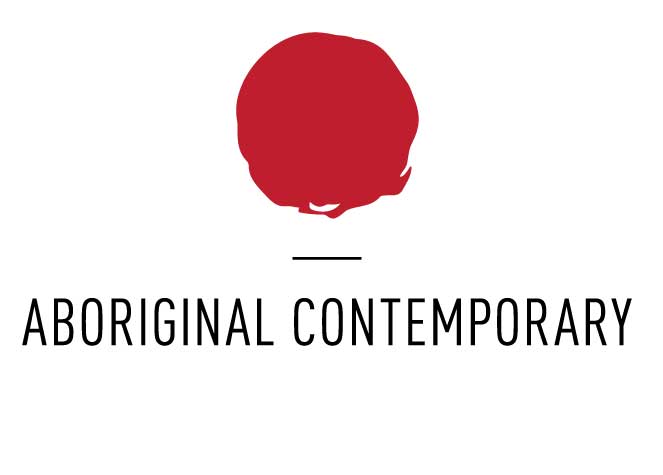On the road with Aboriginal Contemporary
June 10, 2019

The remote aboriginal community of Papunya is about four hours west of Alice Springs. It’s a long way from Nichola Dare’s gallery at Bronte in Sydney and a very long way from Central London, where she grew up; but Nichola looks totally at home sitting on the art centre floor, methodically working her way through a pile of canvasses. She considers many but selects just a few, recognising most of the artists’ styles immediately and occasionally calling out their often Victorian-sounding names to the art centre manager: “Is Doris painting much at the moment?” The large pile of canvases slowly moves from one side of Nichola to the other, only a handful earning a “that’s beautiful” and a place on a much smaller pile. These will be carefully packed, and loaded into her four wheel drive to begin a journey back to Sydney that starts with a week heading in exactly the opposite direction.

Papunya was the first art centre on a trip that would take us north-west from Alice on the Tanami Track - over 1000kms of unsealed red dirt road joining the centre of Australia to the East Kimberley. We would see a lot of red dirt over the coming days: some a straight line pointing to the horizon, some an eye-stinging fog thrown into the air by road trains the size of Manly Ferries; and some swirling down the plug hole on precious occasions we chanced upon a shower.
A local told us of a short cut from Papunya to the community at Yuendumu. Not only was the road nowhere to be seen on our very detailed map but the directions we had diligently listened to soon bore no relation to where we seemed to be. Hours passed. The fuel gauge headed south as we headed God-knows-where. When we had to stop because a feral camel decided to sit in the middle of the road, the conversation turned to tabloid headlines about unprepared city folk perishing in the desert and choosing which actors should play us in the movie of our tragic demise.
It is, of course, entirely possible for a Sydney or Melbourne gallery to obtain aboriginal work from Western Desert art centres without having to stop for camels. Select it online and a few weeks later it arrives in the city. But Nichola is insistent that if you want to get the best art, at least once a year you have to put in the hard yards to build relationships with the art centres and the artists. ‘Hard Yards’ is perhaps misleading as she clearly loves every inch of the experience: watching the landscape change as we head north-west; training my untrained eye how the paintings subtly but unmistakably change with it; and most of all spending time with the artists, who she anticipates with rock star excitement – the experience heightened by the uncertainty of who will be where on any given day.
Nichola’s commitment to the ‘hard yards’ is well-appreciated by her fast-growing group of loyal customers. When we hit a pocket of mobile coverage her phone pings with responses to the Instagram posts of work selected on Day One. What size is the Lisa Mills Pwerle? How much is the Candy Nakamarra? Can I have first option on the Isobel Gorey?
Her customers can be as eclectic as her small gallery, wedged between the barber and the Post Office in Bronte in Sydney’s Eastern suburbs. A short walk to the beach but a million miles from the overpriced tourist art she politely suggests is doing neither the artists nor the category any favours. There’s also some distance between Nichola’s Aboriginal Contemporary and the often-intimidating atmosphere of more formal galleries. Deliberately so. Nichola set out to create an environment where ordinary people can buy the very best aboriginal art in a friendly and relaxed environment. She beams as she tells of a bus driver who saw a Nora Wompi in the window while driving past and returned later with his wife, both of whom had a knowledge and passion for aboriginal art that rivalled her own.
At Papunya, Nichola finds work from an emerging artist who has just sold her first canvases to the National Gallery and they tell of an overseas collector who wouldn’t leave the art centre until he was allowed to buy a painting for twice its retail price. At Balgo, Nichola meets legendary artist Helicopter Tjungarrayi, who got his name when the first helicopter ever seen by his community rescued him after an accident. At Mangkaja, Nichola sits with Dolly Snell while she explains the story she is painting. Soon Dolly and fellow artist, Spider (who is asleep on the porch) will go to their country in the Great Sandy Desert for ceremony. How long will they be away? The question is met with bemusement. Time is different here.


We meet many different characters with many different opinions but all united in their disapproval of ‘Carpetbagers’ - who muddy the waters, exploit the artists and damage confidence in the market. The aboriginal art ‘bubble’ at the turn of the millennium is now but a memory and everyone is genuinely optimistic about the future. They are buoyed both by the success of this year’s Desert Mob and a recent article from a Melbourne art critic describing aboriginal art as ‘the most undervalued art in the country’.
By Darwin, Nichola’s 4WD has many rolls of canvases in the back and more than 3,000kms on the clock. Farewell to the Northern Territory for now. Next stop her gallery in Bronte, where several dozen stunning new works will soon be on display. Nichola’s phone pings yet again. It’s another Instagram enquiry. Looks like a piece of aboriginal art from the Western Desert has a new home in the Eastern Suburbs of Sydney.




